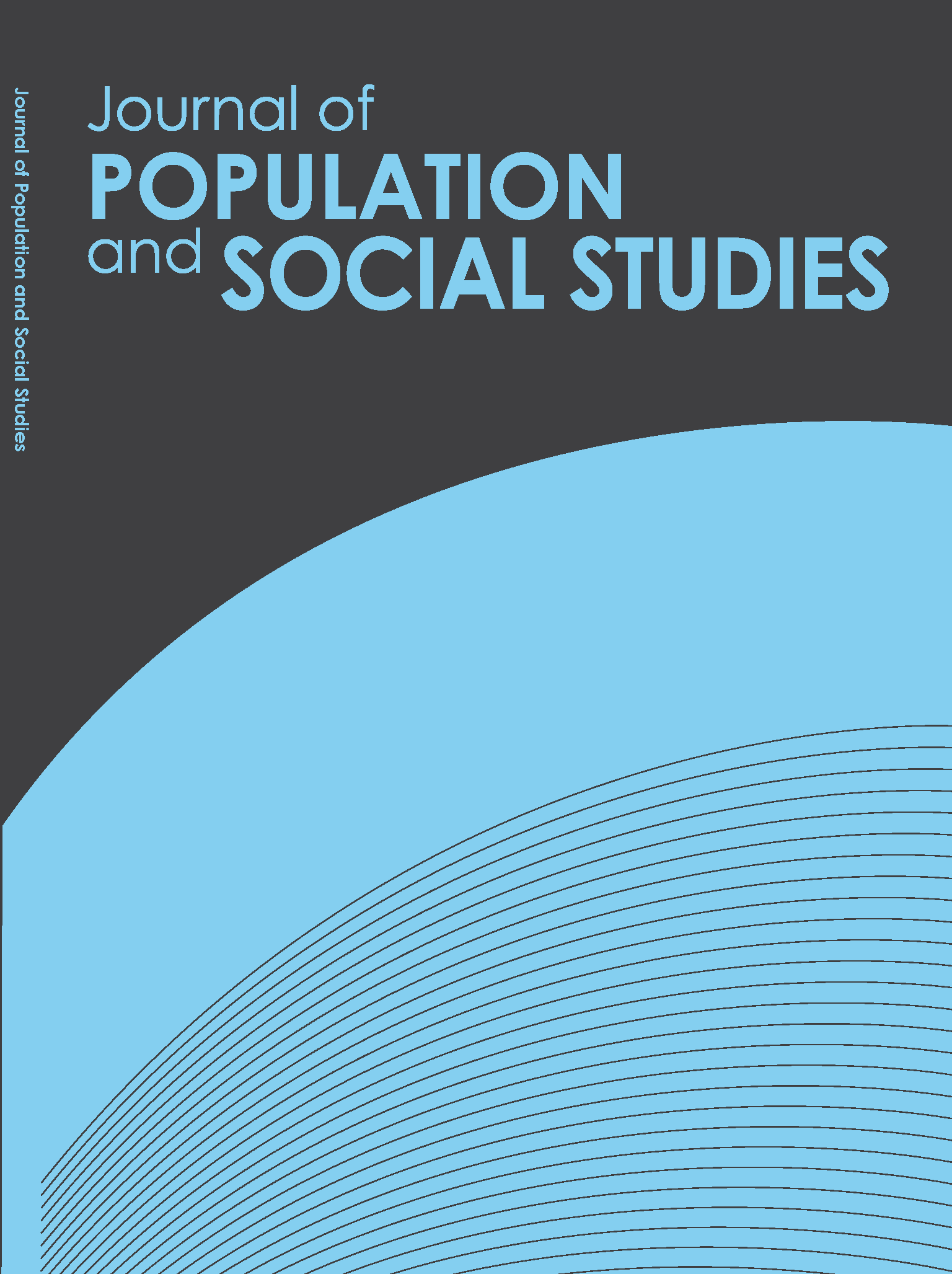Influences of Population Dynamics on Agricultural Land Use in Rural Northeastern Thailand: A Case Study in Nang Rong District
Main Article Content
Abstract
This is a population study that examines the role of population dynamics,
such as fertility, mortality, and out-migration in rural households on agricultural land use. The data of the Nang Rong Projects in 1994-2000 were used for research. The results show that population events which occur in the household affect decisionmakings on utilization of land for agriculture. For example, as results show, a death event in the household reduces the probability of agricultural land use, as does an outmigration
event. The focus is on household factors, comprising family size, number of labor in household, mean age of labor, number of facility items, age of household head, percentage of agricultural occupation in household, land owned, and number of sibling networks. When household factors are controlled, the results show a pattern of agricultural land use in rural areas following a single population event or several simultaneous events.
such as fertility, mortality, and out-migration in rural households on agricultural land use. The data of the Nang Rong Projects in 1994-2000 were used for research. The results show that population events which occur in the household affect decisionmakings on utilization of land for agriculture. For example, as results show, a death event in the household reduces the probability of agricultural land use, as does an outmigration
event. The focus is on household factors, comprising family size, number of labor in household, mean age of labor, number of facility items, age of household head, percentage of agricultural occupation in household, land owned, and number of sibling networks. When household factors are controlled, the results show a pattern of agricultural land use in rural areas following a single population event or several simultaneous events.
Article Details
How to Cite
Wongsaichue, T., Sawangdee, Y., & Rindfuss, R. R. (2007). Influences of Population Dynamics on Agricultural Land Use in Rural Northeastern Thailand: A Case Study in Nang Rong District. Journal of Population and Social Studies [JPSS], 15(2), 45–64. retrieved from https://so03.tci-thaijo.org/index.php/jpss/article/view/84586
Section
Research Articles


